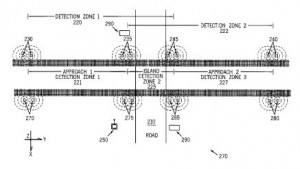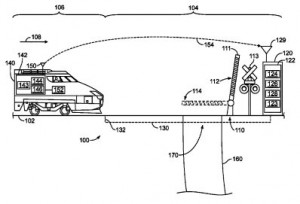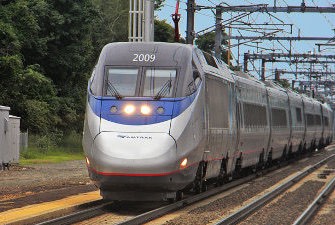On May 12th, an Amtrak train heading north from Philadelphia derailed before it ever left the city. Of its 238 passengers and five crew members, at least 140 were sent to hospitals with injuries and a total of 8 people died in connection with the crash. The official cause of the crash won’t be determined for months until the National Transportation Safety Board releases its findings on the incident, although it has been widely noted that the train’s speed of 106 miles per hour was more than twice the posted speed limit for that section of railroad track running through the area known as Frankford Junction.
In light of this event and its surrounding circumstances, there has been a growing debate on the subject of positive train control (PTC). PTC is a catch-all term meant to cover a collection of technologies designed to prevent train-to-train collisions or derailments that would otherwise occurr due to human error. Positive train control has therefore jumped to the forefront of the media’s consciousness as people rack their minds to figure out how this tragedy might have been prevented.
PTC technologies seek to create a complex infrastructure network for railroad lines which enable the real-time sharing of information between trains, rail wayside devices and software programs referred to as “back office” applications. The communication system tracks a train’s position and movement and determines any speed restrictions as well as the state of signal and switch devices along a railway. If a railway vehicle is speeding or a risk of a collision develops, the PTC system takes control of the train away from a human operator to reduce the speed or take other actions to prevent a collision.
The Federal Railroad Administration has so far approved 24 PTC implementation plans of a total of 41 plans submitted by U.S. railway operators. One such FRA-approved PTC system is known as the Advanced Civil Speed Enforcement System (ACSES). ACSES uses a series of transponders to communicate information and is certified for use on Amtrak’s Northeast Corridor, which includes the section of track where the May 12th derailment occurred. Other PTC systems, such as the Electronic Train Management System (ETMS) developed by BNSF Railway or the Incremental Train Control System (ITCS), another Amtrak system, utilize a GPS communications system to transmit information along the PTC pipeline.
Another train incident leading to passenger fatalities is the reason why so much PTC activity has happened over the past few years. On September 12th, 2008, a head-on collision between a passenger train and a freight train in Chatsworth, CA, resulted in 25 deaths and another 135 injured; it was later discovered that an engineer’s distraction over text messages may have been a major contributing factor to the wreck. In response to this and other fatal accidents in the years prior to Chatsworth, the Rail Safety Improvement Act of 2008 was passed by Congress. This law governs track inspection standards, highway-rail grade crossing safety and hours of service requirements for railroad workers. It also requires the implementation of PTC systems by December 31st, 2015, on about 70,000 miles of Class I main lines for large freight or any line on which poisonous or hazardous materials are transported.
The mainstream media’s attention to the subject of positive train control following the Amtrak crash has led to a political debate in Washington which has become testy at times, especially over the issue of whether more funding for PTC infrastructure improvements could save lives. Days after the Philadelphia derailment, House Speaker Sen. John Boehner (R-OH) dismissed what he referred to as the “stupid” notion that increased railway funding would lead to meaningful changes in railway safety. House Democrats, on the other hand, have pushed a motion to recommit for amending a recent road and transit measure to set aside $750 million for funding PTC development and implementation on American railways.
There might be more to the issue of installing PTC systems on railroads running through our country, however. The Association of American Railroads, an industry group representing Amtrak and others, argues that the full development of PTC systems by the end of 2015 is impossible and that the statutory deadline of December 2015 for PTC implementation should be extended. This would ensure that a PTC system could be fully tested and made fully interoperable before installation on a train. One of the major difficulties of PTC development according to the railroad industry group was the lack of development when the original 2008 mandate came out, requiring many railway operators to develop the technology from scratch.
[Varsity-1]
The ability for most railroads to meet the end-of-year deadline for PTC implementation may also be hampered by regulatory hurdles. Advanced signaling systems for PTC can require the use of up to 22,000 antennas, placing these systems under the jurisdiction of the Federal Communications Commission. This article published by the LA Times reports that the FCC has actually directed railroads to suspend antenna installations until the agency can work out environmental and historic preservation review issues. Even with full FCC approval, it’s estimated that it will take an additional $5 billion to fully develop safe and effective PTC systems for railway use. As of August 2010, CSX Technology, just one railway company, had a PTC implementation plan that included more than 13,000 tasks.
It should also be noted that PTC is not the only technology that has been proving beneficial for preventing railway accidents. Metrolink, the operator of the train involved in the 2008 Chatsworth incident, had afterwards implemented a technology into its rail cars known as automatic train stop (ATS). Metrolink’s ATS system involved a collection of 105 railway sensors to provide engineers with warning lights and alarm sounds as they reach a curve or other sections of railroad track which may be difficult to navigate. There are those who argue that an ATS system coupled with approach control systems which can change railway traffic systems in response to railcar speed might be a working solution which is easier to implement than PTC.
Technologies to Improve Railroad Safety
We decided to perform a quick survey of patents issued by the U.S. Patent and Trademark Office protecting technologies related to positive train control and found a selection which shows us that R&D activity for PTC systems has been rather active in recent months.
 A system for identifying the location of individual trains and tracking complex movement patterns is at the center of U.S. Patent No. 9026283, which is titled Train Detection. This patent, issued to Central Signal, LLC of Madison, WI, protects a train detection system that can determine the occupancy of a railroad track detection zone which includes one or more railroad track segments and a plurality of access points. A sensor device array utilized by the detection system collects and evaluates data to monitor the status of trains detected within the occupancy zone to control crossing signals and other train control devices.
A system for identifying the location of individual trains and tracking complex movement patterns is at the center of U.S. Patent No. 9026283, which is titled Train Detection. This patent, issued to Central Signal, LLC of Madison, WI, protects a train detection system that can determine the occupancy of a railroad track detection zone which includes one or more railroad track segments and a plurality of access points. A sensor device array utilized by the detection system collects and evaluates data to monitor the status of trains detected within the occupancy zone to control crossing signals and other train control devices.
Collision avoidance systems for PTC are at the center of a pair of patents recently issued by the USPTO. U.S. Patent No. 9004412, entitled Rail Collision Threat Detection System, was issued to Electro-Motive Diesel, Inc. of LaGrange, IL. The detection system claimed here includes a transmitter associated with a first train that emits an end-of-train signal and a receiver which receives that signal and a remote signal from a second train to determine the distance between the two trains and whether a collision threat exists.  This innovation achieves a less complicated collision threat detection system for PTC applications. A more responsive system for managing railroad crossings across paved roads is the focus of U.S. Patent No. 9026360, titled Systems and Methods for Providing Constant Warning Time at Crossings. This patent was issued to General Electric Company of Schenectady, NY, to protect a system with a determination module to determine the time at which a rail vehicle will pass a crossing and a communication module which transmits timing data to a remote crossing module. This system is useful for determining a more exact time when a train will pass a crossing, reducing the wait time for motorists stopped at the crossing.
This innovation achieves a less complicated collision threat detection system for PTC applications. A more responsive system for managing railroad crossings across paved roads is the focus of U.S. Patent No. 9026360, titled Systems and Methods for Providing Constant Warning Time at Crossings. This patent was issued to General Electric Company of Schenectady, NY, to protect a system with a determination module to determine the time at which a rail vehicle will pass a crossing and a communication module which transmits timing data to a remote crossing module. This system is useful for determining a more exact time when a train will pass a crossing, reducing the wait time for motorists stopped at the crossing.
 We also took note of a couple of communication systems which can help transmit the data necessary for a PTC system to work properly. A system which can determine whether railway signals or switches may fail or produce errors is reflected within U.S. Patent No. 8989926, titled Railroad Signaling and Communication System Using a Fail-Safe Voltage Sensor to Verify Trackside Conditions in Safety-Critical Railroad Applications. Issued to Convergent Communications, Inc. of Paonia, CO, the patent claims a railroad signaling and communication system which utilizes at least one sensor to provide trackside conditions to a railroad interlocking. This innovation is a more cost-effective technique for reporting switch and signal statuses than conventional methods utilizing microprocessors and safety-validated software. Finally, we were piqued by a technology designed to transmit data even quick for PTC systems, discussed within U.S. Patent No. 8938326, entitled System and Method for Expediting Data Transfer for a Locomotive. This patent, also issued to Electro-Motive Diesel, discloses a system for expediting data transfer between an offboard server and a locomotive through the use of wireless devices, routers and client processors installed in a plurality of locomotives. This system allows for parallel communications of data which improves upon the speed at which data packets can be transmitted in a PTC system.
We also took note of a couple of communication systems which can help transmit the data necessary for a PTC system to work properly. A system which can determine whether railway signals or switches may fail or produce errors is reflected within U.S. Patent No. 8989926, titled Railroad Signaling and Communication System Using a Fail-Safe Voltage Sensor to Verify Trackside Conditions in Safety-Critical Railroad Applications. Issued to Convergent Communications, Inc. of Paonia, CO, the patent claims a railroad signaling and communication system which utilizes at least one sensor to provide trackside conditions to a railroad interlocking. This innovation is a more cost-effective technique for reporting switch and signal statuses than conventional methods utilizing microprocessors and safety-validated software. Finally, we were piqued by a technology designed to transmit data even quick for PTC systems, discussed within U.S. Patent No. 8938326, entitled System and Method for Expediting Data Transfer for a Locomotive. This patent, also issued to Electro-Motive Diesel, discloses a system for expediting data transfer between an offboard server and a locomotive through the use of wireless devices, routers and client processors installed in a plurality of locomotives. This system allows for parallel communications of data which improves upon the speed at which data packets can be transmitted in a PTC system.

![[IPWatchdog Logo]](https://ipwatchdog.com/wp-content/themes/IPWatchdog%20-%202023/assets/images/temp/logo-small@2x.png)


![[Advertisement]](https://ipwatchdog.com/wp-content/uploads/2024/04/Artificial-Intelligence-2024-REPLAY-sidebar-700x500-corrected.jpg)
![[Advertisement]](https://ipwatchdog.com/wp-content/uploads/2024/04/Patent-Litigation-Masters-2024-sidebar-700x500-1.jpg)

![[Advertisement]](https://ipwatchdog.com/wp-content/uploads/2021/12/WEBINAR-336-x-280-px.png)
![[Advertisement]](https://ipwatchdog.com/wp-content/uploads/2021/12/2021-Patent-Practice-on-Demand-recorded-Feb-2021-336-x-280.jpg)
![[Advertisement]](https://ipwatchdog.com/wp-content/uploads/2021/12/Ad-4-The-Invent-Patent-System™.png)






Join the Discussion
No comments yet.